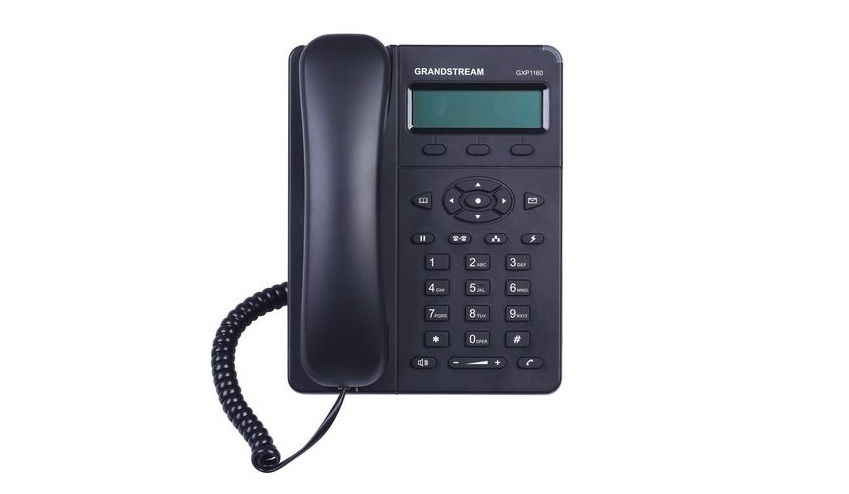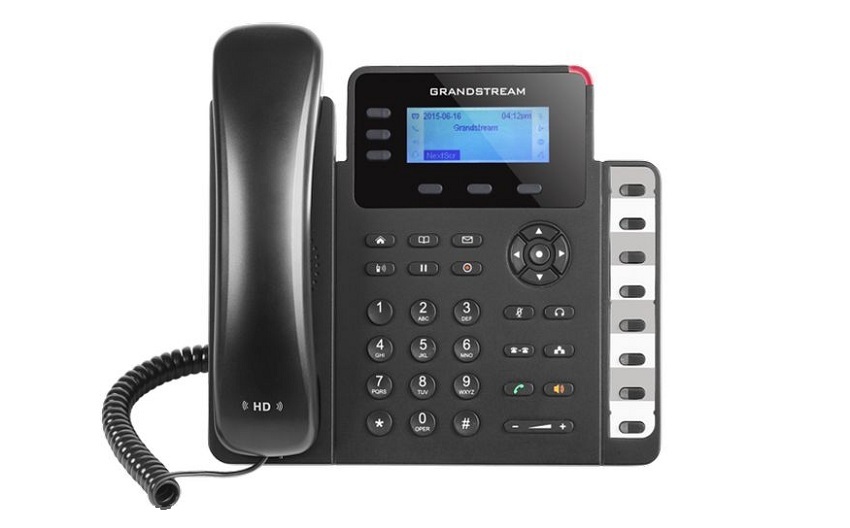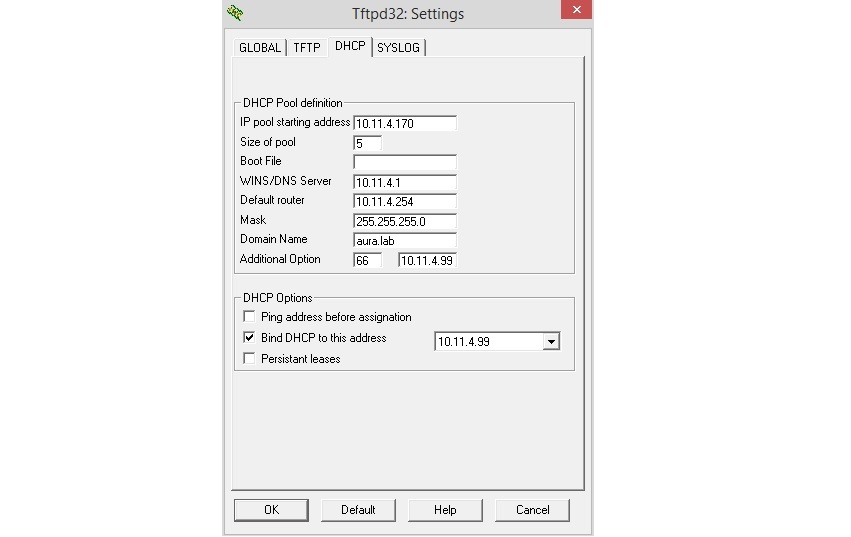Grandstream IP phones and Avaya Aura PBX
In 2014, Avaya began selling low-cost E129 SIP phones. The possibilities offered by this model are rather modest: make a call, transfer a call, make a conference. However, there are two interesting features:
That is, the configuration of the E129 phone is no different from other Avaya IP phones: after connecting the Ethernet cable, the phone turns on, downloads the firmware and settings file, and after that the phone is ready for use. The subscriber needs to enter his Extension and password.
Avaya E129:

')
It is not hard to guess (and find the corresponding stickers and labels inside this phone) that this is nothing more than a Grandstream GXP 1160:

This fact suggests that the “regular” Grandstream phones should work well with Avaya Aura. We conducted an experiment with the participation of modern models (GXP 1160 is discontinued), namely:
GXV 3275 - from the Enterprise segment: color touch screen, 3-member video bridge, Android OS with full support for the Google Play Store.

- from the Enterprise segment: color screen, 6 SIP accounts, conference for 5 participants, Gigabit Ethernet.

GXP1630 - budget segment: monochrome screen, 3 SIP accounts, Gigabit Ethernet.

The results of the experiment are positive. Used:
Grandstream phones without any problems are registered to Avaya Session Manager via SIP protocol and can use Avaya Communication Manager functionality (and other Aura components, for example, Conferencing, Messaging, etc.).
In general, the phone setup is well written in another article on Habré.
Feature Access codes work with CM. For example, by entering * 10, you can intercept the call.
In this case, * 10 is written for the “Call Pickup Access Code” field in the “change feature access-codes” form in the Communication Manager settings .
Unfortunately, you cannot assign the “native” Feature of the Communication Manager button to the phone keys. Fortunately, through the web interface or through the settings file, each Grandstream phone can customize its own buttons with features such as:
It was possible to organize the procedure for putting the phone into operation as close as possible to that used for Avaya phones. Namely:
The procedures themselves are described in some detail in the manufacturer’s documentation: here and here .
DHCP setup example. Option 66 for TFTP server. 10.11.4.99 is the address of the TFTP server.

Those who have worked with Avaya know that the 46xx / 16xx / 96xx series phones will download a single 46xxsettings.txt file that contains various settings (address of the h.323-gatekeeper, sip server, etc.) .
Grandstream phones work differently: when loading, each phone will search for its own configuration file, named “cfgMACADDRESS.xml” (for example, “cfg000B82865DD4.xml”). That is, you have to make one file for each phone. Fortunately, the files are almost identical in content. Only the “Sip User” and “Authenticate ID” fields are different, that is, the subscriber number.
Example file: cfg000B82865DD4.xml

Here 10.11.4.64 is Avaya Session Manager. Phone MAC Address 00: 0B: 82: 86: 5D: D4. Subscriber number - 1504.
The GXP2170 videophone worked adequately in point-to-point mode with the following Avaya terminals:
In addition, with these terminals it was possible to assemble a three-way videoconference at GXP2170 bridge.
- You can use a cheap license to connect to Avaya Aura (comparable to a license for analog phones;
- full integration into existing infrastructure and support for Avaya's existing services for putting phones into operation (242 DHCP options, 96xxupgrade.txt and 46xxsettings.txt configuration files).
That is, the configuration of the E129 phone is no different from other Avaya IP phones: after connecting the Ethernet cable, the phone turns on, downloads the firmware and settings file, and after that the phone is ready for use. The subscriber needs to enter his Extension and password.
Avaya E129:

')
It is not hard to guess (and find the corresponding stickers and labels inside this phone) that this is nothing more than a Grandstream GXP 1160:

This fact suggests that the “regular” Grandstream phones should work well with Avaya Aura. We conducted an experiment with the participation of modern models (GXP 1160 is discontinued), namely:
GXV 3275 - from the Enterprise segment: color touch screen, 3-member video bridge, Android OS with full support for the Google Play Store.

- from the Enterprise segment: color screen, 6 SIP accounts, conference for 5 participants, Gigabit Ethernet.

GXP1630 - budget segment: monochrome screen, 3 SIP accounts, Gigabit Ethernet.

The results of the experiment are positive. Used:
- Avaya Session Manager 7.0
- Avaya Communication Manager 7.0
- Avaya System Manager 7.0
- Avaya Aura Media Server 7.0 (as DSP resources)
Grandstream phones without any problems are registered to Avaya Session Manager via SIP protocol and can use Avaya Communication Manager functionality (and other Aura components, for example, Conferencing, Messaging, etc.).
In general, the phone setup is well written in another article on Habré.
Feature Access codes work with CM. For example, by entering * 10, you can intercept the call.
In this case, * 10 is written for the “Call Pickup Access Code” field in the “change feature access-codes” form in the Communication Manager settings .
Unfortunately, you cannot assign the “native” Feature of the Communication Manager button to the phone keys. Fortunately, through the web interface or through the settings file, each Grandstream phone can customize its own buttons with features such as:
- Speed dialing
- Busy lamp field
- Etc.
It was possible to organize the procedure for putting the phone into operation as close as possible to that used for Avaya phones. Namely:
- In addition to IP parameters, the DHCP server sends the TFTP server address to the phone in a special option;
- The TFTP server contains a settings file (or several files) containing comprehensive information for the further operation of the phone;
- After switching on the phone to the network, the user can only enter his Extension and password.
The procedures themselves are described in some detail in the manufacturer’s documentation: here and here .
DHCP setup example. Option 66 for TFTP server. 10.11.4.99 is the address of the TFTP server.

Those who have worked with Avaya know that the 46xx / 16xx / 96xx series phones will download a single 46xxsettings.txt file that contains various settings (address of the h.323-gatekeeper, sip server, etc.) .
Grandstream phones work differently: when loading, each phone will search for its own configuration file, named “cfgMACADDRESS.xml” (for example, “cfg000B82865DD4.xml”). That is, you have to make one file for each phone. Fortunately, the files are almost identical in content. Only the “Sip User” and “Authenticate ID” fields are different, that is, the subscriber number.
Example file: cfg000B82865DD4.xml

Here 10.11.4.64 is Avaya Session Manager. Phone MAC Address 00: 0B: 82: 86: 5D: D4. Subscriber number - 1504.
The GXP2170 videophone worked adequately in point-to-point mode with the following Avaya terminals:
- A175
- H175
- Scopia XT5000
In addition, with these terminals it was possible to assemble a three-way videoconference at GXP2170 bridge.
Source: https://habr.com/ru/post/313480/
All Articles